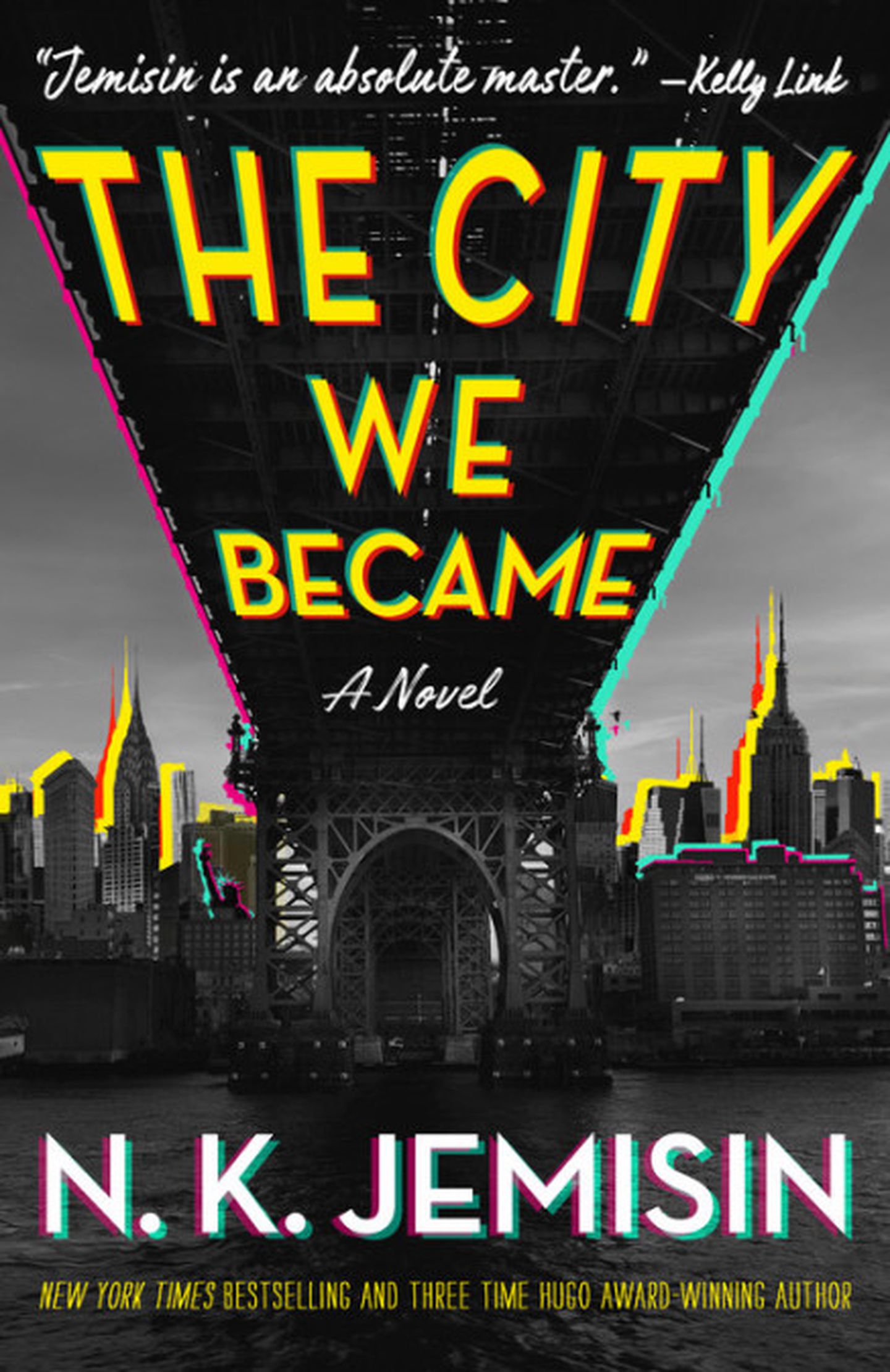

Chapters open with sentences such as “Something is very wrong at Inwood Hill Park”, and “He can sense the prickle of the Enemy’s work nearby”. Tentacular unspeakablenesses lurk in the East River, huge enough to smash up bridges. Hideous tendrils squeeze up from between paving slabs. One of the city’s cops metamorphoses into an eight-legged, myriad-eyed abomination and comes scrambling after Manny. The threat to New York appears as a series of ghastly Lovecraftian apparitions.

There is something of Neil Gaiman in this idea – think of the Angel Islington from his 1996 novel Neverwhere, an actual angel living below London – although Jemisin’s imagination is less disposably whimsical than Gaiman’s, and her story inhabits a more horrific vibe. In Jemisin’s New York, the villains are the cops and corporations, and heroism is the bailiwick of ordinary citizens It’s lucky they do, since the city is under supernatural attack and in need of defenders.

New York manifests as five separate figures: Manhattan becomes Manny, a likable young chancer, and other individuals emerge to embody Brooklyn, the Bronx, Queens and Staten Island. Her focus is the scuzzy immediacy of street-level city living. It’s an idea as old as Athena, although Jemisin’s treatment is rather less loftily divine than Greek myth. Such figures are at once the “soul” of the city and regular human people, somewhat bewildered to discover their calling. This is that all the world’s great cities, when they reach a certain size, are magically “born” into anthropomorphic form, individuals who live in, and guard, their metropolis. It develops the premise of Jemisin’s 2016 story “The City Born Great” (which is included as the novel’s prologue).

In other words, this is an intensely site-specific piece of fiction. And there is certainly fun to be had in The City We Became, though I suspect that native New Yorkers will have more fun than out-of-towners. In interviews Jemisin has described her new book as “my chance to have a little monstrous fun after the weight of the Broken Earth saga”, which is perhaps by way of dialling down expectations. Broken Earth is a work of extraordinary scope and grandeur, written with apocalyptic energy and verve, a story that moves mountains. The problem is that buzz can build unrealistic expectations and lead thereby to anticlimax. Today she is certainly the most important fantasy writer of her generation all of which means that major excitement surrounds The City We Became, her first novel since Broken Earth. All three titles in her Broken Earth trilogy – 2015’s The Fifth Season, 2016’s The Obelisk Gate and 2017’s The Stone Sky – won the Hugo award for best novel, an unprecedented achievement. Her ascendency has been as rapid as it has been deserved. N K Jemisin is now such a major figure in science fiction and fantasy, it’s remarkable to think that her first novel was published only 10 years ago.


 0 kommentar(er)
0 kommentar(er)
